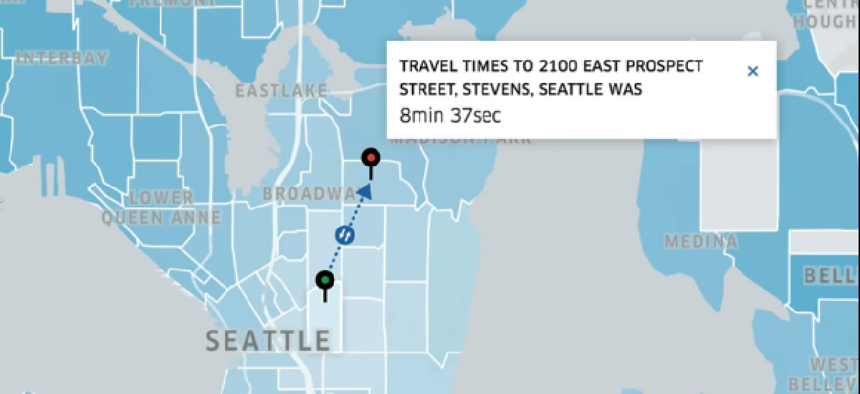Uber offers cities a (limited) motherlode of trip data


Connecting state and local government leaders
The decision comes as a result of calls by local governments for more granular traffic data.
Uber has announced a standalone dashboard website called Movement that will make ride data more available to cities and the general public.
The company is providing access to aggregated traffic data and speeds that it says could be valuable to city officials, policymakers and traffic and urban planners in the cities where it operates. The ride-hailing app has been used by more than 2 billion riders, and the company says the information from those rides will provide valuable insights to local governments.
“Over the past six and a half years, we’ve learned a lot about the future of urban mobility and what it means for cities and the people who live in them,” Uber said on its website. “We’ve gotten consistent feedback from cities we partner with that access to our aggregated data will inform decisions about how to adapt existing infrastructure and invest in future solutions to make our cities more efficient.”
All of the rider information will remain anonymous, according to Uber. The information allows one to see how different events – a car crash, basketball game or protest -- affect traffic flow. One of the use cases provided by Uber describes how its data could help officials measure the impacts of recent disruption of the Washington D.C.-area Metrorail schedule.
Uber looked at its data to see the effects on Washington roadways. When the entire system shut down on March 16, a diagonal band of traffic analysis zones showed heavier traffic, likely on highways, according to Movement.
“Commuters to Northern Virginia and Prince George’s County may be more concentrated along these thoroughfares, leading to far worse congestion during the service outage,” Uber said on its website. “Conversely, the relatively mild congestion through Northwest DC could be a result of commuters in that area and Montgomery County following a more diffuse set of routes out of the District. Interestingly, travel times between downtown and Navy Yard/Anacostia appear largely normal during the shutdown.”
This data can paint a clear picture of driving habits, though Uber’s topline analysis could have likely been provided by any D.C.-area commuter: When rail transit shuts down, travel times increase.
That lack of specificity in the reported data in trip information has put the company at odds with city governments.
Uber is currently fighting a rule in New York City that would require it to provide the pickup and drop off location for every ride, which, as Uber claimed in an email to its New York City users, creates privacy risks.
Boston officials were likewise frustrated by the company’s unwillingness to share more specific data, according to a report in the New York Times. Ridesharing services represent what is effectively the addition of another transit line,” about which the city has very little data, Boston CIO Jascha Franklin-Hodge told the Times in an interview.
The company also clashed with California officials over autonomous vehicle testing when the state’s Department of Motor Vehicles pulled the registrations for Uber's driverless fleet because it said the cars were not properly marked as test vehicles. The company moved the tests to Arizona where the governor has promised less oversight, AZcentral reported.
Uber did not respond to a request for comment for this article.

NEXT STORY: DOT opens dataset on Smart City Challenge ideas




